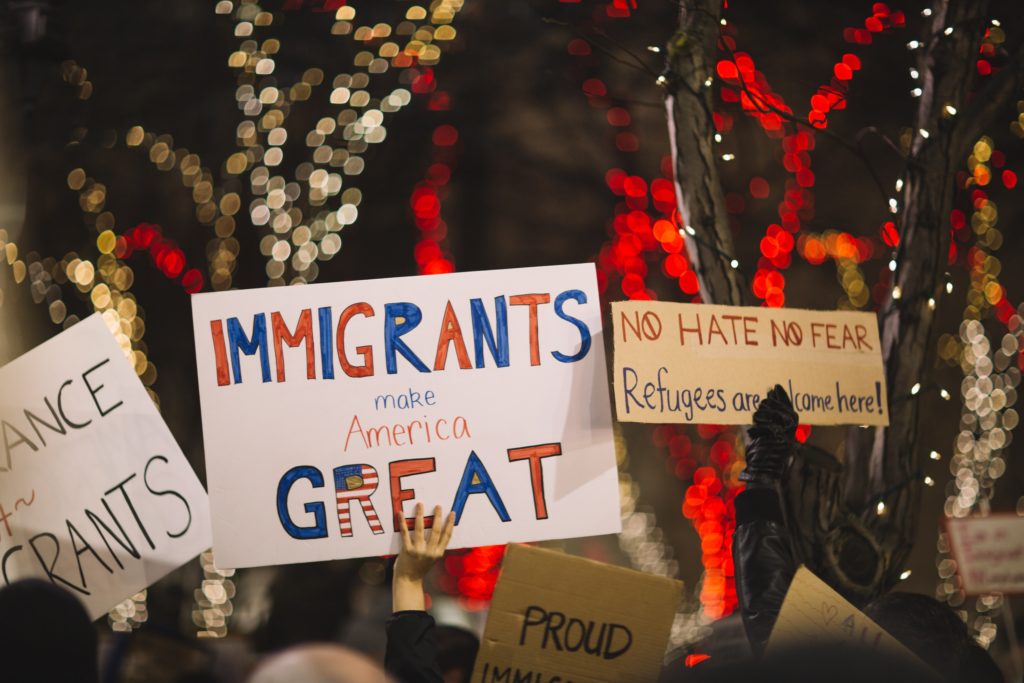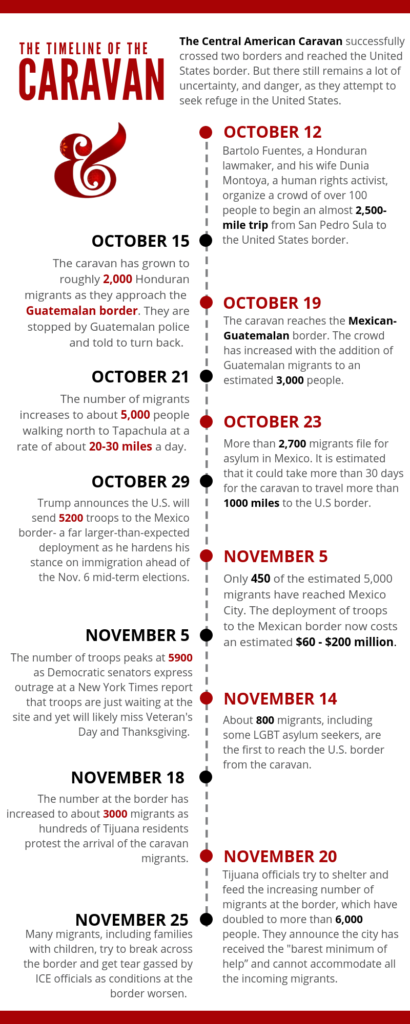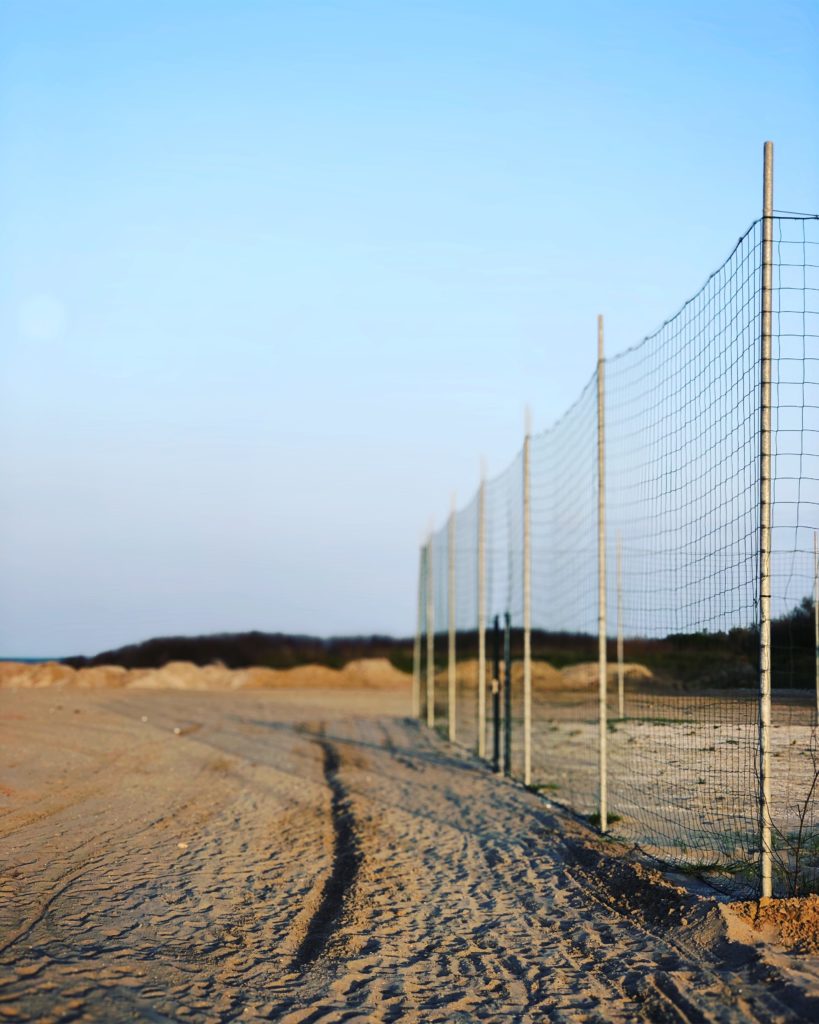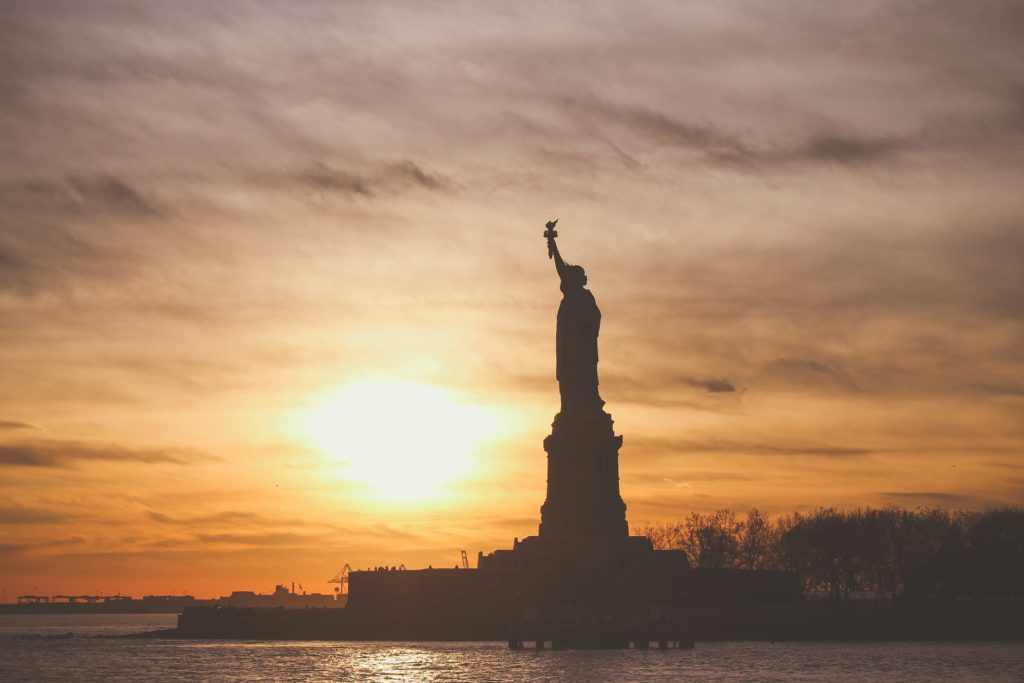The Central American caravan has dominated the recent news cycle– and not by accident. Trump used the caravan to instill fear in voters before the midterm election. And his current rhetoric is nothing short of inflaming. But what are the real facts behind the caravan? And where will things go from here?
The current immigration policy of the Trump administration is a ‘zero tolerance’ policy. Attorney General Jeff Sessions announced the policy in May of this year, which included the Family Separation Policy. The policy, thus far, has separated more than 2,000 children from their parents, and although authorities were able to reunite some of the families, there are still children in custody and the administration still has no clear plan on how to reunite the remaining children to their families.

‘Zero tolerance’ was supposed to deter people from coming into the United States. As evidenced by the caravan, this has not worked. The Department of Homeland Security reported a rise in border apprehensions, especially from migrant families. As reported, apprehensions have increased from 16,483 in August to 20,120 in September.
But many of those in the caravan, even those traveling with small children, are familiar with Trump’s policy and yet are still willing to take the risk.
The caravan is a response to the political and economic crisis that has escalated in Central American countries over the last couple of years. In Honduras, where most of the migrants of the caravan originated from, there has been extreme poverty and violence. The World Bank reports that, as of 2016, more than 60 percent of Hondurans live in poverty and there are 43 murders per 100,000 inhabitants. This is in addition to the political crisis that intensified almost a year ago after many protested the presidential election result of current President Juan Orlando Hernández, who many Hondurans argue was illegitimately placed on the ballot. So these issues, along with many more such as lack of economic opportunity, horrific domestic violence situations, and drug and corruption problems throughout Central America, are intense push factors that have led to the creation of this Central American caravan.
Here is a timeline documenting the main events of the past few months surrounding the Central American caravan.

What will happen next?
The White House administration has been following the Caravan closely, and using it as a fear mongering tactic. As President Trump said in a rally for the midterms, “These are some bad people. These aren’t little angels. These are some hardened criminals coming up. And we’re not letting them in.” And this rhetoric likely won’t let up any time soon.
Although most of the first Caravan migrants have reached the border, everything is still very uncertain on what will happen to migrants and how long it will take for them to receive guidance or move forward. Right now, U.S officials are only letting about 100 people a day approach the border crossing and receive a “credible fear” interview, the first step in the process of applying for asylum, and there is no clear timeline of when they will be reviewed or accepted. This administration is clearly trying to prevent many of these migrants from coming into to the United States.

It was reported today that hundreds of Central American migrants who traveled in the caravan to Tijuana are requesting assistance to go back home or filing for asylum in Mexico rather than seeking to legally enter the U.S., according to Mexican authorities. These requests have spiked in the past two days as conditions continue to worsen at the border.
But there may be one shining light in this immigration disaster. Although the thousands of migrants currently camped along the southern border may never gain asylum in the USA, the pressure they have placed on the nation’s immigration system may force Congress to revamp an outdated system used to admit people seeking safe haven in America.

President Donald Trump has treated the caravan as a purely law enforcement situation, even trying to cut off asylum for some members of the caravan, a move that was quickly shot down by federal courts. So that means it may be up to Congress to find a long-term solution to prevent future waves of caravans and foreign-born individuals searching for refuge in America. Fixing our broken immigration system can no longer wait.
By: Cianna Allen and Wuendy Calmo
Graphic by Cianna Allen

